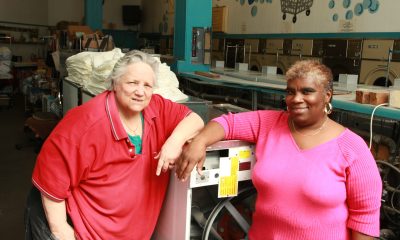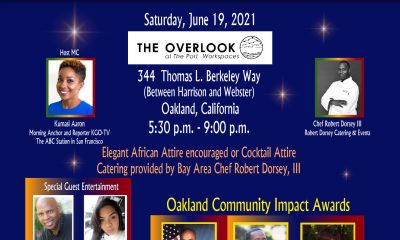Environment
Residents Support Water Cutbacks, Worry About Rate Increases
A recent Field poll indicates that 65 percent of Californians support Governor Jerry Brown’s mandatory 25 percent reduction of water use in urban areas.
At the same time, seven out of 10 homeowners say that it would be a “serious problem” if their water bill increased by 15 to 25 percent.
East Bay Municipal Utility District (EBMUD) customers have already been asked to reduce their water use by 20 percent, with a goal of 35 gallons per day, per person, for indoor use.
Residential water use accounts for around 68 percent of EBMUD’s water demand, while commercial use is around nine percent, and around 11 for industrial, according to Nelsy Rodriguez, spokesperson for EBMUD.
Current demand is going down because of conservation and is around 151 million gallons per day.
Also, a surcharge will be discussed by the EBMUD Board of Directors on June 9, and if approved, will go into effect July 1. The temporary surcharge would be removed if the EBMUD board decides the drought is over, according to Rodriguez.
Rodriguez went on to explain that about 100 people have protested the surcharge, using Proposition 218.
Prop 218 was passed in 1996, and requires local governments to have a vote when considering any new taxes on property owners. The law recently gained traction in April when a California Court of Appeals said that the law extends to water municipalities.
Residents in Morada, a small town just north of Stockton, protested against increased water rates. Prop 218 allowed the town to keep water costs at a flat rate, as long as the majority of customers protested the hike.
However, the same Field report also indicates that 57 percent of California residents believe that agriculture can reduce water consumption without hardships.
In an interview with the Post, Dr. Peter Gleick, founder of Oakland based Pacific Institute, said: “The biggest source of water out there is the water that we waste every day, doing the things that we do. A lot of the water we use now can be used more effectively. We could grow more food with less water, with better irrigation technology. And we could supplement that with more efficient toilets and washing machines at home. That’s probably the biggest source of untapped water, is the water that we’re wasting.”
Gleick went on to explain that “in the short run, individual behavior plays a significant role during droughts, because it takes time to implement new policies or technologies. But in the long run, changes in technology will be very important. We have a short term drought, and a long term water problem.”
Looking at possible solutions, Gleick said, “We treat waste water, and treat it to a fairly high standard, and then dump it into the ocean. But now there’s more of an effort to put that waste water to re-use. For instance, we use recycled waste water for our office landscaping.”
“We need to expand our storage capacity, but there are innovative ideas around groundwater storage,” he continued. “We over-pump our groundwater now, but we could be refilling those aquifers during rainy years.”
“There are proposals for conjunctive use – it’s the joint management of surface water and ground water together, and I think that offers far more potential than any new surface storage,” Gleick added.
“The reason the idea is so appealing is that it doesn’t require any more damage to rivers, and water isn’t lost to evaporation. I think the concept has great potential,” he said.
A recent Field poll indicates that 65 percent of Californians support Governor Jerry Brown’s mandatory 25 percent reduction of water use in urban areas.
At the same time, seven out of 10 homeowners say that it would be a “serious problem” if their water bill increased by 15 to 25 percent.
East Bay Municipal Utility District (EBMUD) customers have already been asked to reduce their water use by 20 percent, with a goal of 35 gallons per day, per person, for indoor use.
Residential water use accounts for around 68 percent of EBMUD’s water demand, while commercial use is around nine percent, and around 11 for industrial, according to Nelsy Rodriguez, spokesperson for EBMUD.
Current demand is going down because of conservation and is around 151 million gallons per day.
Also, a surcharge will be discussed by the EBMUD Board of Directors on June 9, and if approved, will go into effect July 1. The temporary surcharge would be removed if the EBMUD board decides the drought is over, according to Rodriguez.
Rodriguez went on to explain that about 100 people have protested the surcharge, using Proposition 218.
Prop 218 was passed in 1996, and requires local governments to have a vote when considering any new taxes on property owners. The law recently gained traction in April when a California Court of Appeals said that the law extends to water municipalities.
Residents in Morada, a small town just north of Stockton, protested against increased water rates. Prop 218 allowed the town to keep water costs at a flat rate, as long as the majority of customers protested the hike.
However, the same Field report also indicates that 57 percent of California residents believe that agriculture can reduce water consumption without hardships.
In an interview with the Post, Dr. Peter Gleick, founder of Oakland based Pacific Institute, said: “The biggest source of water out there is the water that we waste every day, doing the things that we do. A lot of the water we use now can be used more effectively. We could grow more food with less water, with better irrigation technology. And we could supplement that with more efficient toilets and washing machines at home. That’s probably the biggest source of untapped water, is the water that we’re wasting.”
Gleick went on to explain that “in the short run, individual behavior plays a significant role during droughts, because it takes time to implement new policies or technologies. But in the long run, changes in technology will be very important. We have a short term drought, and a long term water problem.”
Looking at possible solutions, Gleick said, “We treat waste water, and treat it to a fairly high standard, and then dump it into the ocean. But now there’s more of an effort to put that waste water to re-use. For instance, we use recycled waste water for our office landscaping.”
“We need to expand our storage capacity, but there are innovative ideas around groundwater storage,” he continued. “We over-pump our groundwater now, but we could be refilling those aquifers during rainy years.”
“There are proposals for conjunctive use – it’s the joint management of surface water and ground water together, and I think that offers far more potential than any new surface storage,” Gleick added.
“The reason the idea is so appealing is that it doesn’t require any more damage to rivers, and water isn’t lost to evaporation. I think the concept has great potential,” he said.
Activism
Oakland’s ‘Green the Church,’ Others, Host a Climate Revival
On April 20, Oakland’s Green The Church California (GTC) and the Center For Food, Faith and Justice will celebrate Earth Day and present a Climate Revival event titled “Growing Healthy Communities From Soil To The Soul” at McGee Avenue Baptist Church at 1640 Stuart St, Berkeley, CA. The day will include inspiring talks, interactive workshops, networking opportunities, and a special panel on Food Sovereignty and Global Food Resilience.
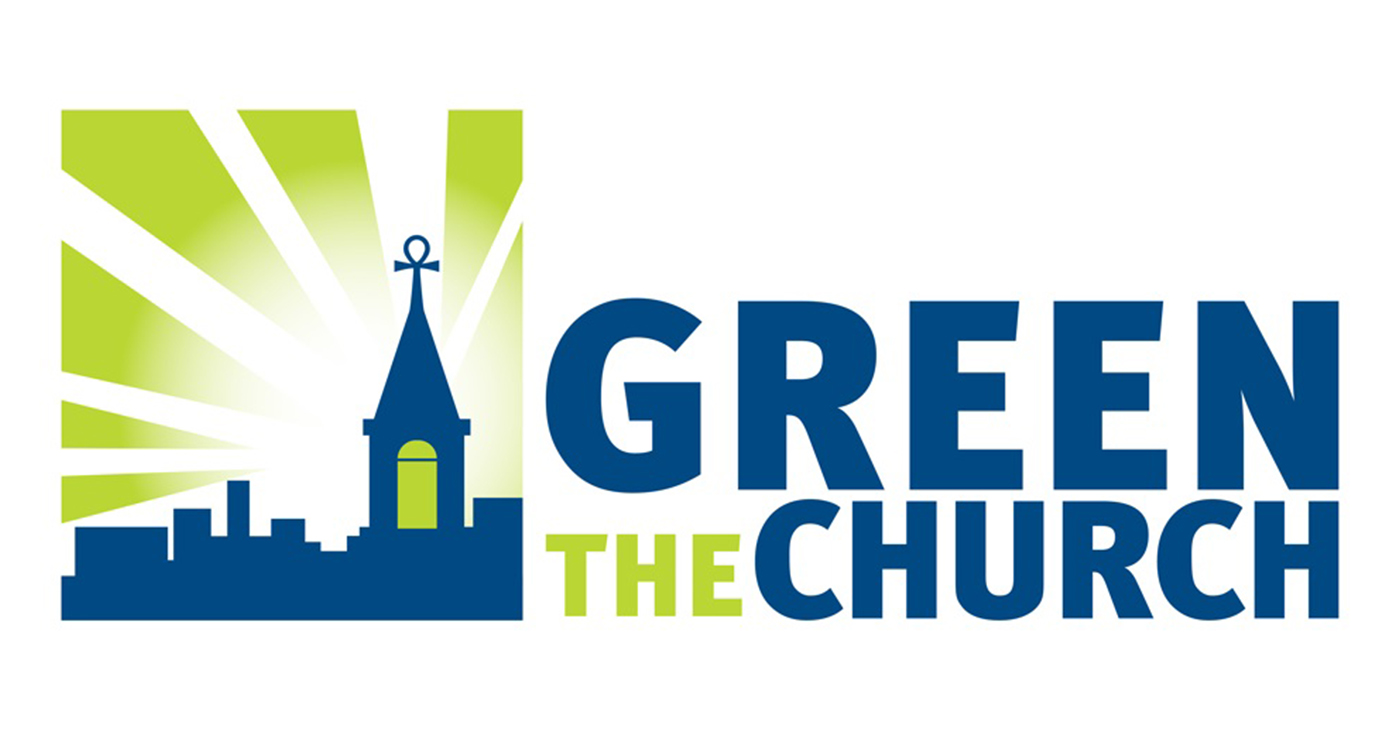
Growing Healthy Communities from Soil to the Soul in Berkeley
By Y’Anad Burrell
On April 20, Oakland’s Green The Church California (GTC) and the Center For Food, Faith and Justice will celebrate Earth Day and present a Climate Revival event titled “Growing Healthy Communities From Soil To The Soul” at McGee Avenue Baptist Church at 1640 Stuart St, Berkeley, CA,
The day will include inspiring talks, interactive workshops, networking opportunities, and a special panel on Food Sovereignty and Global Food Resilience.
The keynote speaker is Rev. Danté R. Quick, PhD, senior pastor of First Baptist Church of Lincoln Gardens in Somerset, N.J. Quick is well known in the Bay Area, having served for more than 10 years as pastor of Friendship Missionary Baptist Church in Vallejo, CA.
Green The Church, founded in 2010 by Rev. Dr. Ambrose Carroll, Sr., and headquartered in Oakland, helps galvanize Black churches and their local communities and leaders to address issues critical to populations historically disengaged from conversations around pollution and health, climate change, and sustainability and energy efficiency.
The organization collaborates with major environmental, sustainability, food security, faith, and community-based non-profit organizations, and is committed to “creation justice”—care and justice for God’s people and the planet—and building the Beloved Community.
Environmental justice has long been a pressing concern for communities of color who bear the brunt of pollution and ecological degradation. Climate change exacerbates these issues, disproportionately impacting vulnerable communities. Recognizing this urgency, Black churches across the country are taking action.
With deep roots in the African American community and its commitment to social justice, the Black Church has become an essential advocate for sustainable practices and policies.
Over the past 14 years, in a powerful collaboration with significant environmental, sustainability, food security, faith, and community-based non-profit organizations, GTC has created a cadre of Black churches engaging in the environmental justice, climate, and sustainability movement.
GTC presently works with more than 1,000 pastors and congregations across the U.S., and groups in the Bahamas, Ghana, Nigeria, and the UK, showing that we can make a difference together.
The partnership between environmental justice advocates and the Black Church extends beyond individual congregations. Green The Church provides resources and support for faith communities seeking to address climate change and promote environmental justice.
Through collaboration, initiatives such as energy efficiency programs, solar installations, and environmental education have been implemented in Black churches nationwide. These efforts reduce the carbon footprint and save money on energy bills, benefiting the congregations and their communities.
The involvement of the Black Church in the fight against climate change is not just a participation, it’s a powerful message that galvanizes action across communities.
By integrating environmental justice into their ministry, Black churches are demonstrating that addressing climate change is not only a matter of science but also of social and moral responsibility, inspiring change at a grassroots level.
For more information, go to: www.greenthechurch.org.
Bay Area
Richmond’s Growing Bay Trail Boasts Bountiful Beauty
The Standard recently enjoyed a sunny-day stroll through Richmond’s Barbara and Jay Vincent Park and an exquisite section of the city’s ample share of San Francisco Bay Trail. Near Vincent Park’s entrance, the Bay Trail offers locals a front-row view of Richmond’s Marina, with an eclectic mix of boats and some of the city’s shoreline eateries like Lara’s Fine Dining and Anh Restaurant & Bar.
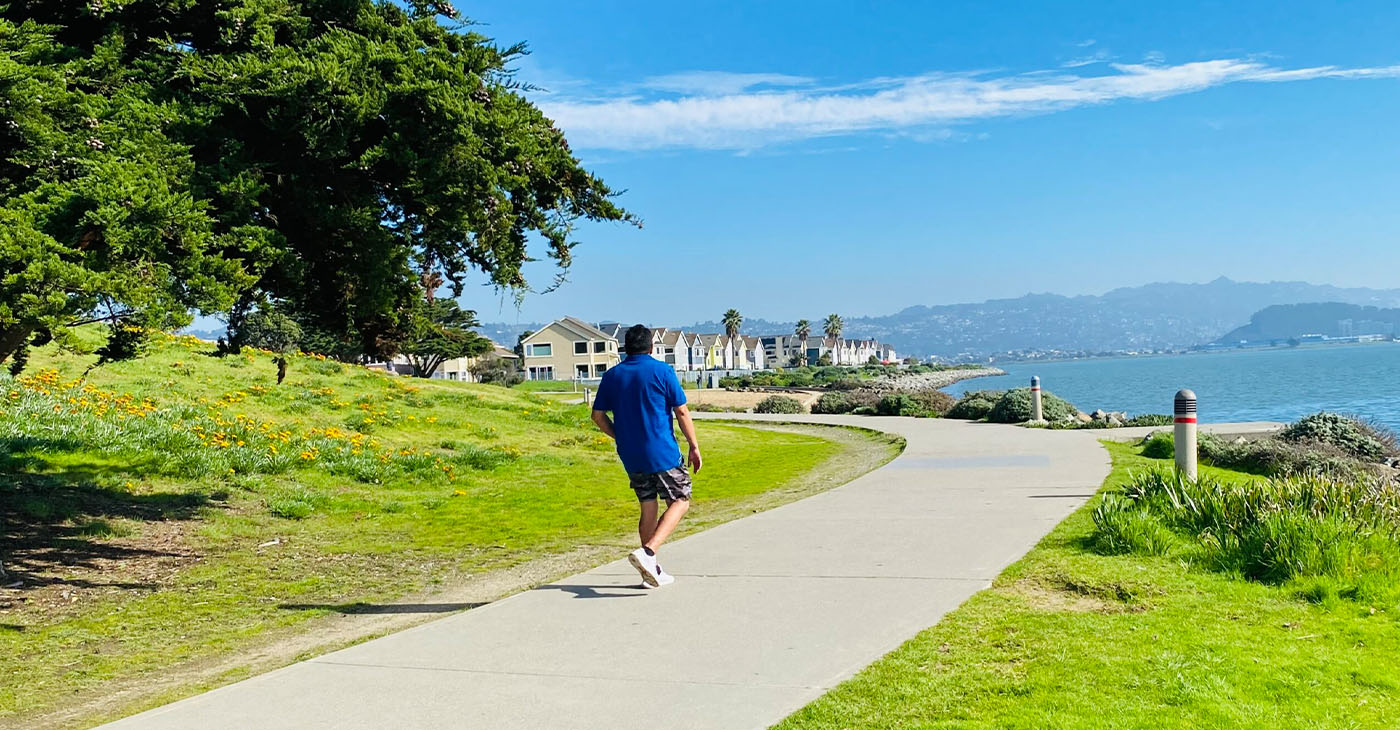
By Kathy Chouteau
The Richmond Standard
When was the last time you used the Bay Trail in Richmond?
The Standard recently enjoyed a sunny-day stroll through Richmond’s Barbara and Jay Vincent Park and an exquisite section of the city’s ample share of San Francisco Bay Trail.
Near Vincent Park’s entrance, the Bay Trail offers locals a front-row view of Richmond’s Marina, with an eclectic mix of boats and some of the city’s shoreline eateries like Lara’s Fine Dining and Anh Restaurant & Bar.
Stroll further into the park on the trail and you’ll spy the Craneway Pavilion and Rosie the Riveter Park’s Visitor Center across the water, as well as ample geese—and if your timing is right—a few sailboarders getting ready to launch into San Francisco Bay.
A great kids’ playground and BBQ grills also await in the well-used park. Follow the trail around the western bend to see the park’s small but picturesque beach and clear-day views of San Francisco, the Golden Gate Bridge and more. The Bay Trail will lead you to Berkeley and beyond if you’ve got the energy.
To this reporter, who has spent lots of time here, Vincent Park and the Bay Trail are some of Richmond’s most stunning outdoor gifts for its people.
‘Gifts’ because our outdoor views don’t cost a thing yet deliver a quiet joy ready to reenergize you for the week. And for your kids and four-legged friends, there’s a world of sea creatures, shells, and other outdoor ephemera to discover after a dig in the sand.
Take it from someone who originally hails from a land-enclosed state, and a city where the most interesting hyper-local views were of the Bethlehem Steel mill in Bethlehem, Pa.
While my native city’s steel might have been used to build the Golden Gate Bridge and WWII ships, and this reporter has deep love for her hometown, trust me when I say that people in ‘the Rich’ are privy to some of the best views I’ve ever seen in our country.
According to the Trails for Richmond Action Committee (TRAC), Richmond has more than 32 miles of shoreline, which is more than any other city on San Francisco and San Pablo Bays. The Bay Trail currently has more than 300 miles completed of 500 planned for the trail around both bays. Enjoy Richmond’s bounty!
Want to learn more about the Bay Trail in Richmond? Check out TRAC.
California Black Media
After Severe Storms Kill 12, State Warns of Ongoing Dangers
State authorities and elected officials around California are thanking 8,500 first responders for their combined efforts over the past weeks to save lives during severe storms that killed 12 people, contributed to intense flooding, led to power outages, downed trees and caused more than $10 million in damages.
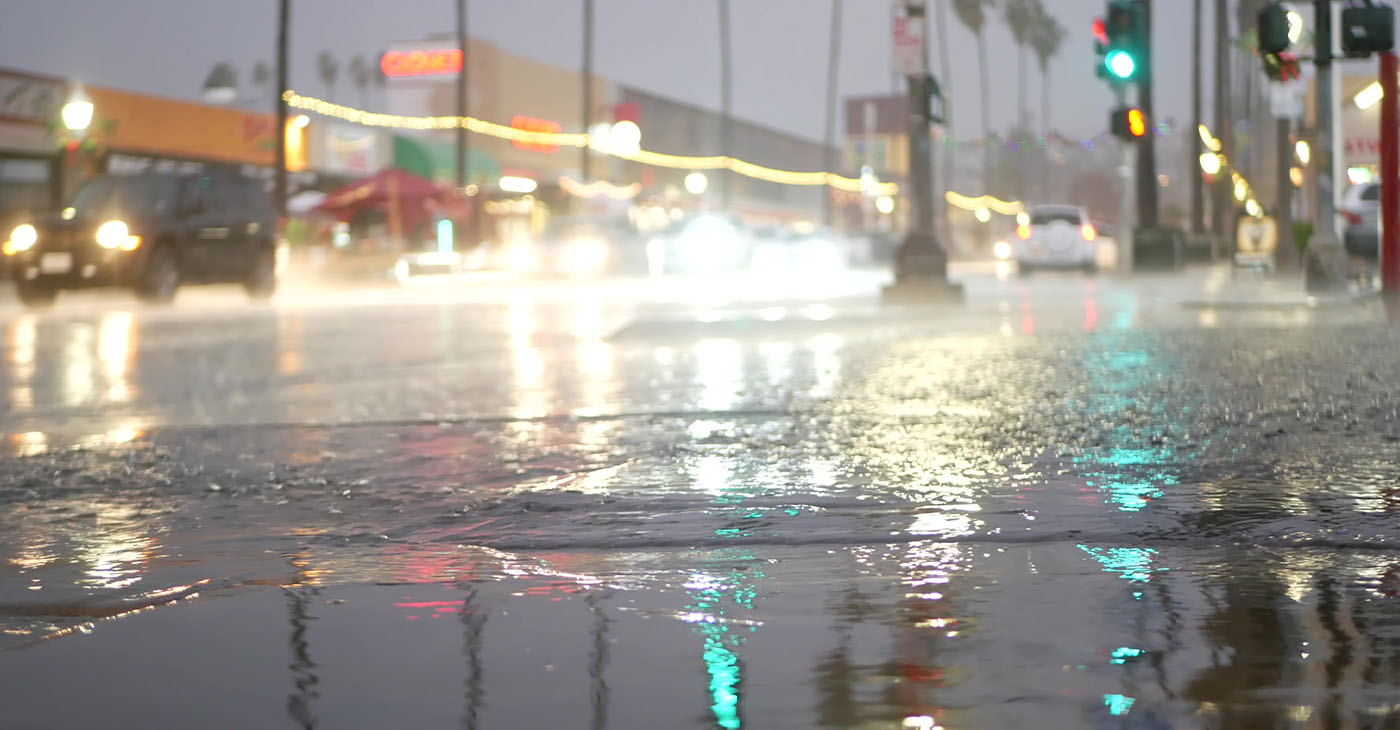
By California Black Media
State authorities and elected officials around California are thanking 8,500 first responders for their combined efforts over the past weeks to save lives during severe storms that killed 12 people, contributed to intense flooding, led to power outages, downed trees and caused more than $10 million in damages.
They are also directing Californians to resources to address losses they may have suffered during the storms and warning them of ongoing dangers.
“We mobilized an all-of-government response, including our swift water rescue teams that have made 47 rescues,” said Gov. Gavin Newsom. “We’re grateful to our thousands of first responders who have saved countless lives and kept our state going in the face of record-breaking rainfall and snow.”
On Feb. 4, the Governor declared a state of emergency in eight counties: Los Angeles, Ventura, Orange, San Bernardino, San Luis Obispo, Santa Barbara, Riverside and San Diego.
On Feb. 7, Newsom followed up by requesting a major disaster declaration from the White House to support San Diego County as it recovers from the storms.
“The late January storm saw record-breaking rain in San Diego, where the worst impacts were felt in lower-income neighborhoods. Many folks saw damage to their life’s work that can’t be recovered without federal support,” the Governor said.
On Feb 10, the Governor’s Office for Emergency Services (CalOES) provided safety tips for returning home aimed at Californians who had to evacuate, including how to deal with accumulated muck, mud and debris.
In Sacramento County, a 63-year-old woman was found dead under a large fallen tree in her backyard.
Effects of recent storms can weaken trees, leading to falling branches or even entire trees, which can cause damage to homes, and vehicles and pose a threat to public safety, according to Cal OES.
The sudden occurrence of toppled trees, fallen branches or uprooted trees saturated by standing water creates hazardous conditions for pedestrians, motorists, power lines and homes.
CalOES is urging Californians to stay informed about whether forecasts, and informed the public that it is still assessing storm damages.
-

 Activism4 weeks ago
Activism4 weeks agoOakland Post: Week of March 27 – April 2, 2024
-

 #NNPA BlackPress4 weeks ago
#NNPA BlackPress4 weeks agoCOMMENTARY: D.C. Crime Bill Fails to Address Root Causes of Violence and Incarceration
-

 #NNPA BlackPress4 weeks ago
#NNPA BlackPress4 weeks agoMayor, City Council President React to May 31 Closing of Birmingham-Southern College
-

 #NNPA BlackPress4 weeks ago
#NNPA BlackPress4 weeks agoBeloved Actor and Activist Louis Cameron Gossett Jr. Dies at 87
-

 Community1 week ago
Community1 week agoFinancial Assistance Bill for Descendants of Enslaved Persons to Help Them Purchase, Own, or Maintain a Home
-

 Activism3 weeks ago
Activism3 weeks agoOakland Post: Week of April 3 – 6, 2024
-

 Business1 week ago
Business1 week agoV.P. Kamala Harris: Americans With Criminal Records Will Soon Be Eligible for SBA Loans
-

 Activism2 weeks ago
Activism2 weeks agoOakland Post: Week of April 10 – 16, 2024










